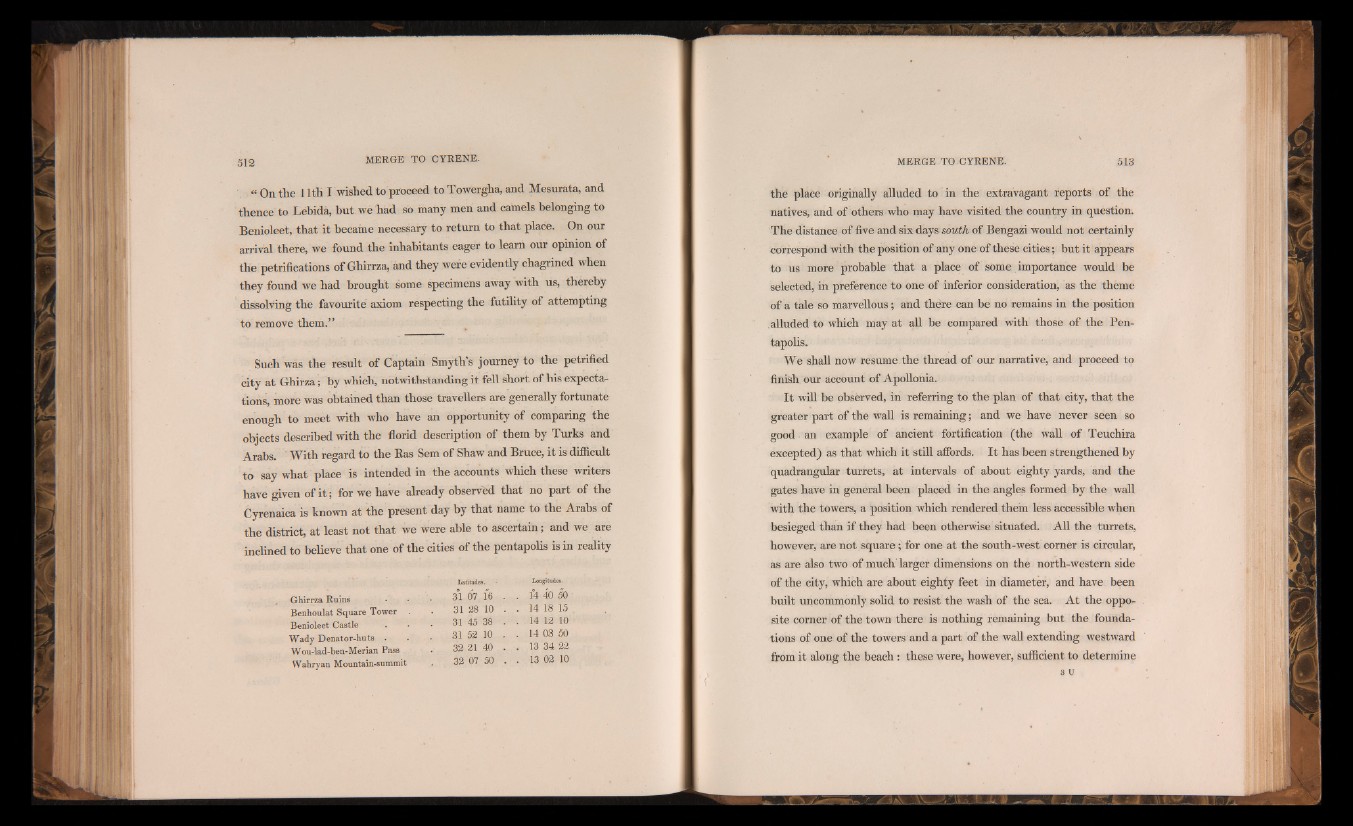
“ On the 11th I wished to proceed to Towergha, and Mesurata, and
thence to Lébidà, but we had so many men and camels belonging to
Benioleet, that it became necessary to return to that place. On our
arrival there, we found the inhabitants eager to learn our opinion of
the pétrifications of Ghirrza, and they were evidently chagrined when
they found we had brought some specimens away with us, thereby
dissolving the favourite axiom respecting the futility of attempting
to remove them.”
Such was the result of Captain Smyth’s journey to the petrified
city at Ghirza; by which, notwithstanding it fell short of his expectations,
more was obtained than those travellers are generally fortunate
enough to meet with who have an opportunity of comparing the
objects described with the florid description of them by Turks and
Arabs. With regard to the Eas Sem of Shaw and Bruce, it is diflicult
to say what place is intended in the accounts which these writers
have given of i t ; for we have already observed that no part of the
Cyrenaica is known at the present day by that name to the Arabs of
the district, at least not that we were able to ascertain; and we are
inclined to believe that one of the cities of the pentapolis is in reality
Ghirrza Ruini*
Benhoulat Square Tower .
Benioleet Castle
Wady Denator-huts .
Wou-lad-ben-Merian Pass
VVahrvaiì Mountain-summit
Latitudes. Longitudes.
3°1 07 16 . . 1°4 40 50
31 28 10 . . 14 18 15
31 45 38 . . 14 12 10
31 52 10 . . 14 03 50
32 21 40 . . 13 34 22
32 07 50 . . 1 3 02 10
the place originally alluded to in the extravagant reports of the
natives, and of others who may have visited the country in question.
The distance of five and six days south of Bengazi would not certainly
correspond with the position of any one of these cities ; but it appears
to us more probable that a place of some importance would be
selected, in preference to one of inferior consideration, as the theme
of a tale so marvellous; and there can be no remains in the position
alluded to which may at all be compared with those of the Pentapolis.
We shall now resume the thread of our narrative, and proceed to
finish our account of Apollonia.
I t will be observed, in referring to the plan of that city, that the
greater part of the wall is remaining; and we have never seen so
good an example of ancient fortification (the wall of Teuchira
excepted) as that which it still affords. I t has been strengthened by
quadrangular turrets, at intervals of about eighty yards, and the
gates have in general been placed in the angles formed by the wall
with the towers, a position which rendered them less accessible when
besieged than if they had been otherwise situated. All the turrets,
however, are not square; for one at the south-west corner is circular,
as are also two of much larger dimensions on the north-western side
of the city, which are about eighty feet in diameter, and have been
built uncommonly solid to resist the wash of the sea. At the opposite
corner of the town there is nothing remaining but the foundations
of one of the towers and a part of the wall extending westward
from it along the beach: these were, however, sufficient to determine